This month will be the anniversary of an almost forgotten event - November 16, 1992 started, and on November 22, the apparatus of the Europe-America 500 Goodwill mission landed, delivering souvenirs and messages from the world from Plesetsk to Seattle. This mission is called the first private space flight, but it is more correct to call it the only example of space mail.
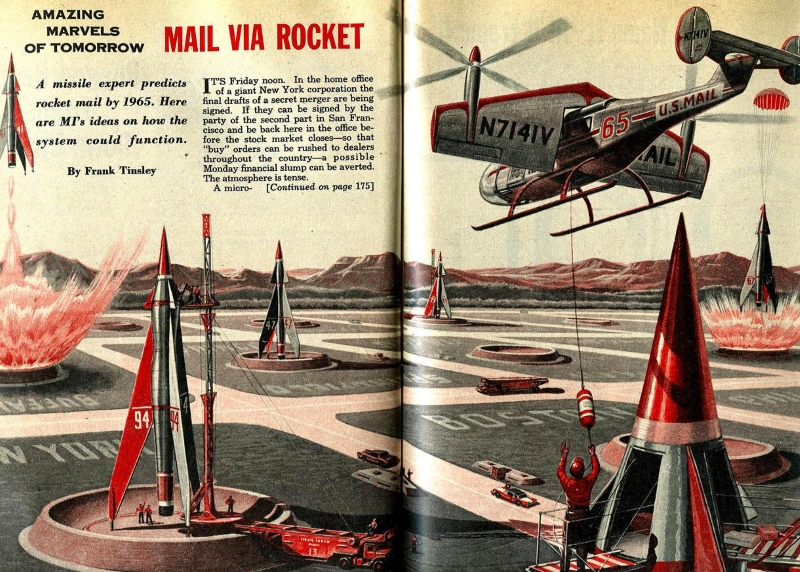 Mechanix Illustrated Magazine, January 1957
Mechanix Illustrated Magazine, January 1957Plesetsk-Seattle rocket express
In 1985, under the newspaper Komsomolskaya Pravda, the Foundation for Social Inventions was created. In addition to processing tens of thousands of proposals to create a civil society from newspaper readers, the foundation supported organizations from the Union of Afghanistan Veterans to Interfax, and also participated in the preparation of the first visit of Boris Yeltsin to the United States in 1989. In the early 90s, when the plants were left without military orders, the topic of conversion was very popular - the transition of the military enterprise to the production of civilian products. And a bright head dawned on the idea of killing two birds with one stone - to arrange public relations of the Russian rocket and space technology and to save at least temporarily jobs at Progress TsSKB in Samara, producing a cargo vehicle based on the Resurs-F1 remote sensing satellite.
 "Resource-F1". The sphere on the right is a descent vehicle similar to “Vostok”, “Sunrises”, “Zeniths” and modern “Photons” and “Bions”
"Resource-F1". The sphere on the right is a descent vehicle similar to “Vostok”, “Sunrises”, “Zeniths” and modern “Photons” and “Bions”Surprisingly, private money was found for this event - the sponsors were the companies Interservice, Neva International, Garant (all now forgotten) and Bank Saint Petersburg, which has survived to this day. The official
bulletin specifically emphasizes that this order was able to save thousands of jobs.
In addition to money, it was necessary to agree at the state level. American entrepreneur and philanthropist Bob Walsh, who had previously participated in organizing the Goodwill Games in Seattle, heard about the project during a visit to Moscow in 1991 and agreed to support it overseas.
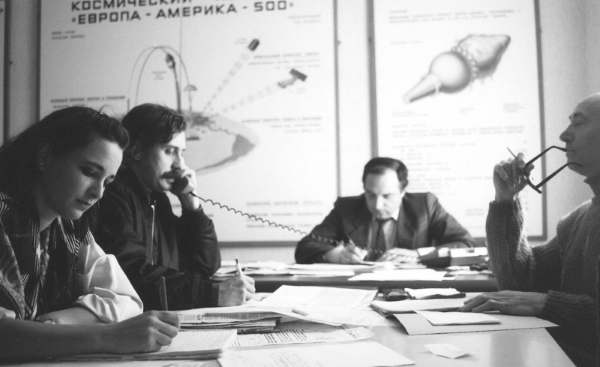 Photo from Perta Campbell
Photo from Perta CampbellThe device was loaded with 19 containers with souvenirs, gifts, product samples, extinguished by Soviet one-ruble banknotes, icons, children's drawings, two wedding rings, a crystal statuette of the Statue of Liberty, messages of Boris Yeltsin, the leaders of European countries and the Dalai Lama. The total weight of cargo amounted to one ton with a total mass of "Resource-500" of 6 tons.
At 0:52 Moscow time, the Soyuz launch vehicle successfully launched from the Plesetsk cosmodrome. After a week in space, the satellite issued a braking impulse, and the descent capsule crashed down 190 kilometers off the west coast of the United States. The ship of the measuring complex "Marshal Krylov", despite the seven-point storm, found it on the signals of the beacon COSPAS-SARSAT and raised it on board.
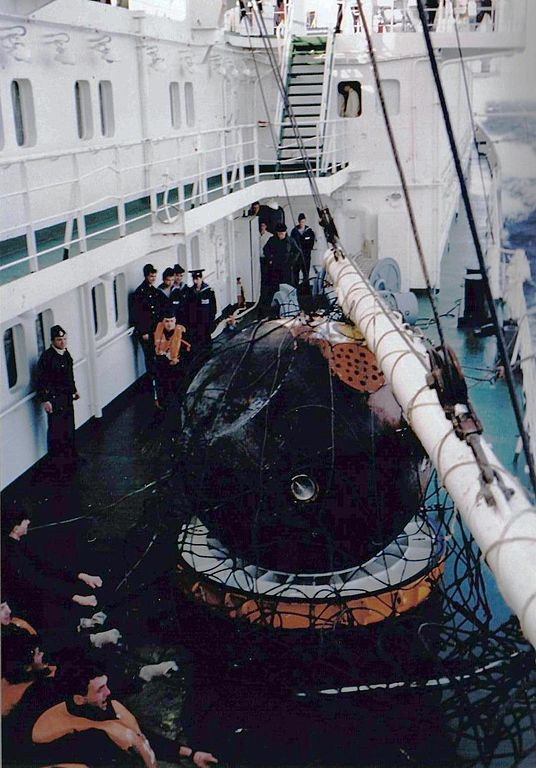 "Resource-500" on board the "Marshal Krylov", photo AnatolySh / Wikipedia
"Resource-500" on board the "Marshal Krylov", photo AnatolySh / WikipediaOn the morning of November 24, the ship moored solemnly in the port of Seattle. The city hosted extensive events - a conference of business opportunities, a parade, photo and art exhibitions. Both sides made steps towards greater openness - the visit of “Marshal Krylov” was the first visit of the Soviet ship to the port of Seattle since the Second World War, and previously the secret ship was opened for the first time by foreigners. The lander at the Blue Bird search and rescue all-terrain vehicle was sent to the Aviation Museum, where it is still located.
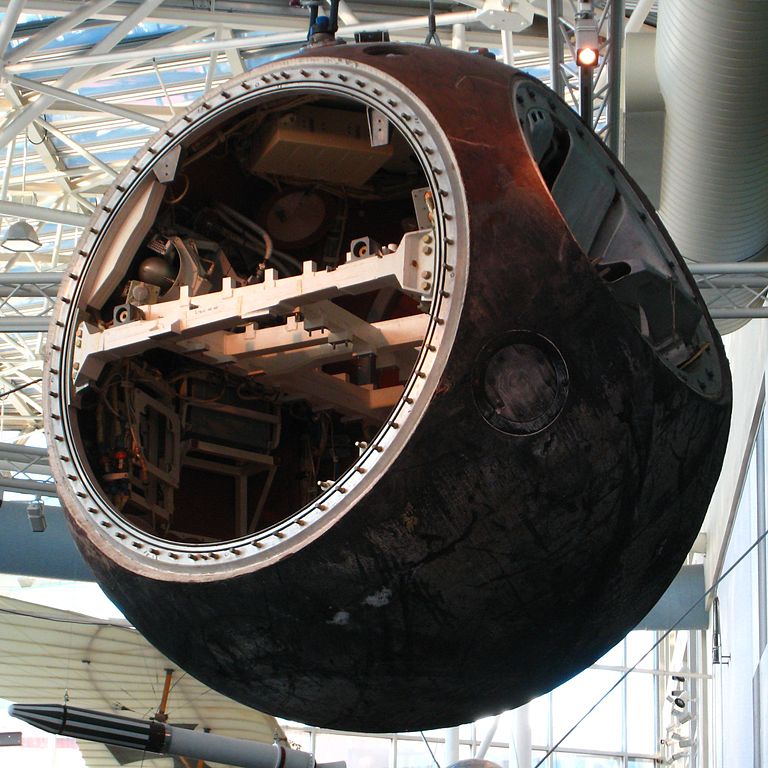 "Resource-500" in the Aviation Museum, photo by Ciar / Wikipedia
"Resource-500" in the Aviation Museum, photo by Ciar / WikipediaThe flight became a catalyst for such initiatives as Business for Russia and the Europe-America 500 consortium. An internship program was launched, according to which, until 2000, 10 thousand people visited the United States, including 3,000 Russians.
It is impossible to call the conditions in which the Europe-America 500 project originated good, but he was very lucky to be realized (the dates are only 150 days from the idea to the flight!), And it turned out to be successful - thanks to him, too, the Russian space companies managed to declare about yourself in the international market.
Rocket mail
The idea of using rockets for mail delivery appeared in the early 19th century, after the Congrive missiles became widely known and began to be produced in large quantities. The German playwright, poet and novelist Heinrich von Kleist calculated that several stationary rocket batteries would allow mail from Berlin to Breslau, a distance of 300 km, in just half a day. On the island, Tonga (Polynesia) experimented with sending mail with rockets, but failed to achieve satisfactory reliability.
In the 20th century, enthusiasts of rocket technology, thinking about the use of missiles, of course, remembered about the mail. In 1931-35, Friedrich Schmidl launched 24 V-7 missiles, which delivered more than six thousand letters between two Austrian settlements at a distance of several kilometers. Gerhard Zucker traveled around Germany, popularizing rocket mail, and was almost able to convince British mail, but both rockets exploded while trying to deliver the shipments over a distance of one and a half kilometers.
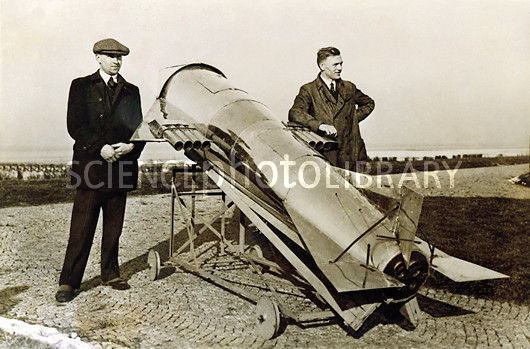 Gerhard Zucker (right)
Gerhard Zucker (right)In India, Stephen Smith, starting in 1934, spent more than two hundred launches until 1944.
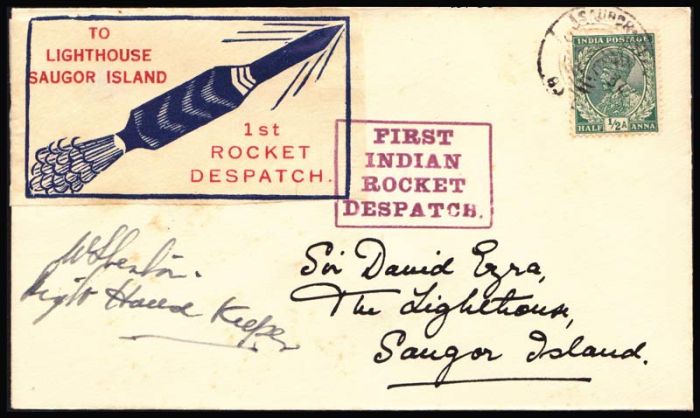 Indian Rocket Mail Envelope
Indian Rocket Mail EnvelopeIn the United States in 1936, the first rocket mail was delivered over a distance of only a few hundred meters with the help of a cruise missile.
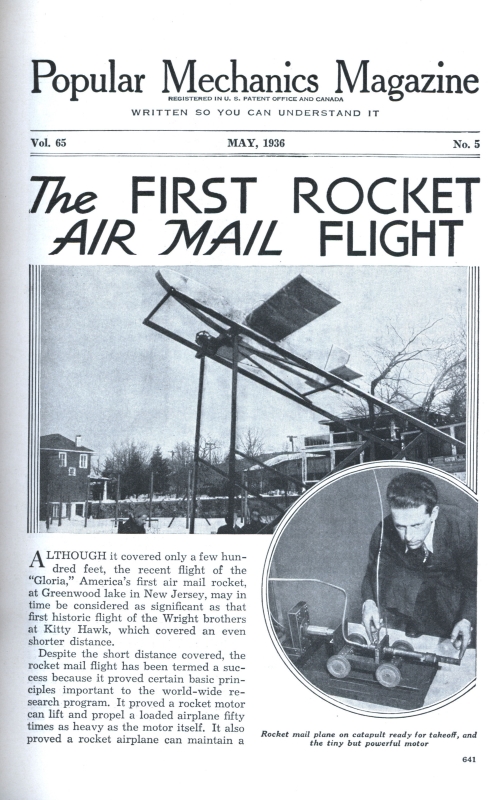 First US Missile Mail, Popular Mechanics magazine, May 1936
First US Missile Mail, Popular Mechanics magazine, May 1936There are even videos of failed tests:
The story is well known that, during World War II, an innocent discussion in a narrow circle of the peaceful use of ballistic missiles, including for the transport of mail, cost Von Braun serious problems with the Gestapo. In France, experiments were conducted with postal rockets after the war. And in the 1950s, enthusiasts in the United States sent small missiles across state lines and the Colorado River.
But the most impressive experiment with rocket mail was conducted in the USA in 1959. From the Barbero submarine, a Regulus cruise missile was launched, in which three thousand letters were placed in place of a nuclear warhead.
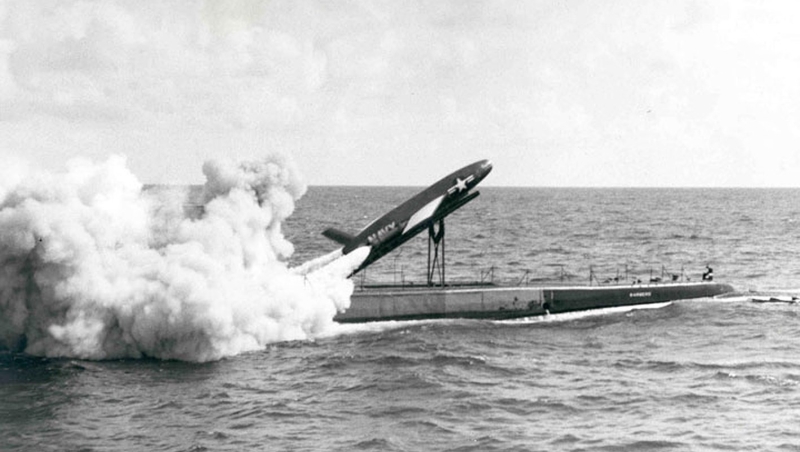 Launch of the Regulus rocket, photo by the United States National Postal Museum
Launch of the Regulus rocket, photo by the United States National Postal Museum The envelope
The envelopeThey even posted an official post office on the submarine, and US General Postmaster General Summerfield said that even before landing a man on the moon, cruise missiles would deliver mail. He was mistaken - if in the 1920s the letter went across the Atlantic Ocean for a week, then in the 1950s air mail covered this distance in 24 hours, and no departures could recoup the cost of the cruise missile.
Beautiful but mistaken
Some enthusiasts like the head of the Mars Society of Robert Zubrin believe in rocket mail today, and after reviving the ideas of suborbital passenger rockets Maskom at the 68th International Astronautical Congress it would be fun to hear from him in 2018 about cargo / mail missiles, but in my opinion it’s going to be visible The future of rocket mail is extremely unlikely. Information is instantly and for pennies transmitted over the Internet, and for material items the cost of delivery is usually more important than speed. There is no hope for the elite business shipments market - there will not be many such applications. It is a pity that this beautiful idea of the peaceful use of rockets turned out to be erroneous, but the rockets have enough work in space, and we can easily see the beautiful picture in fiction. For example, a very funny rocket mail in the
movie “Mission: Impossible 2” (from 2:28):